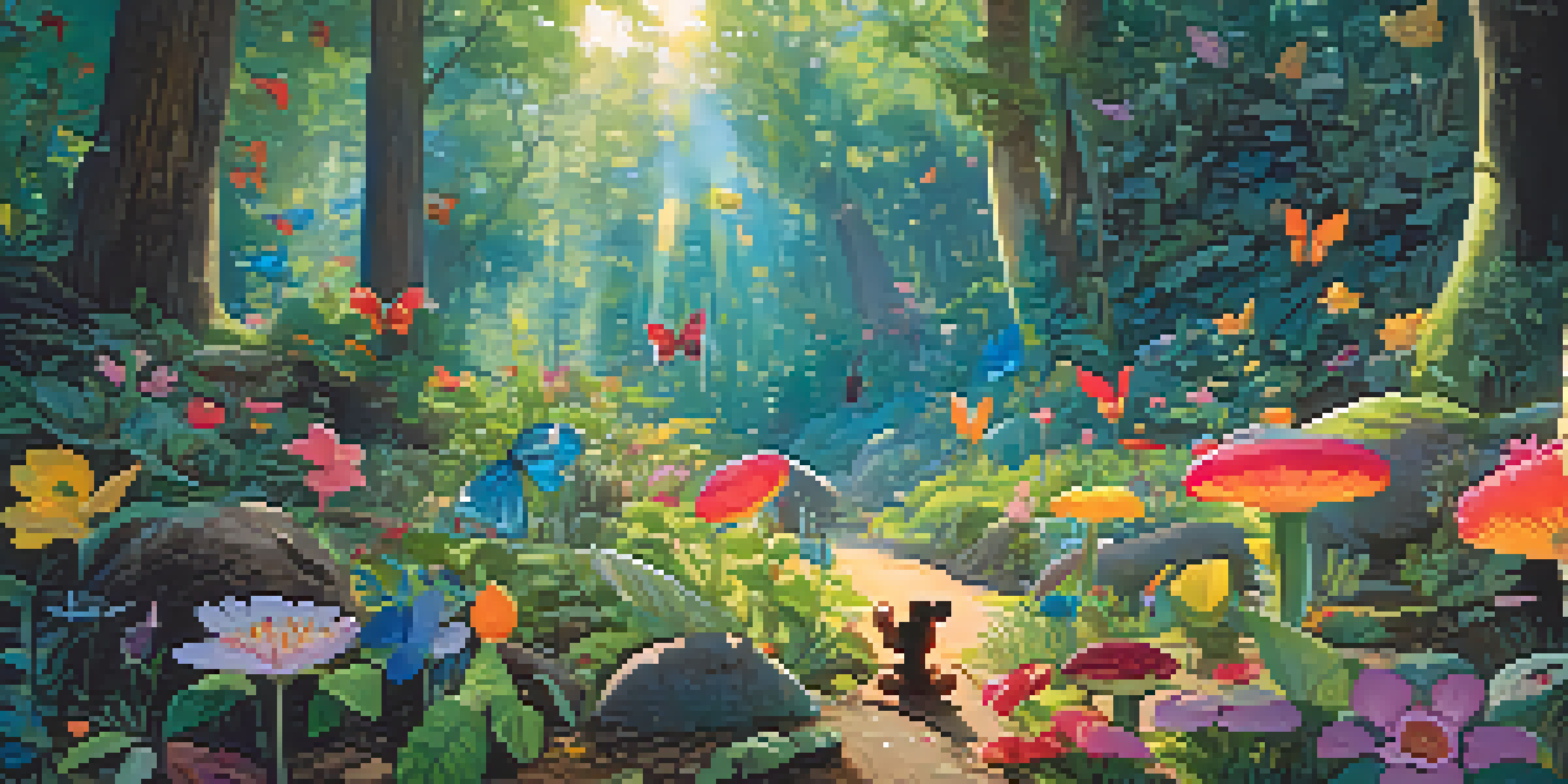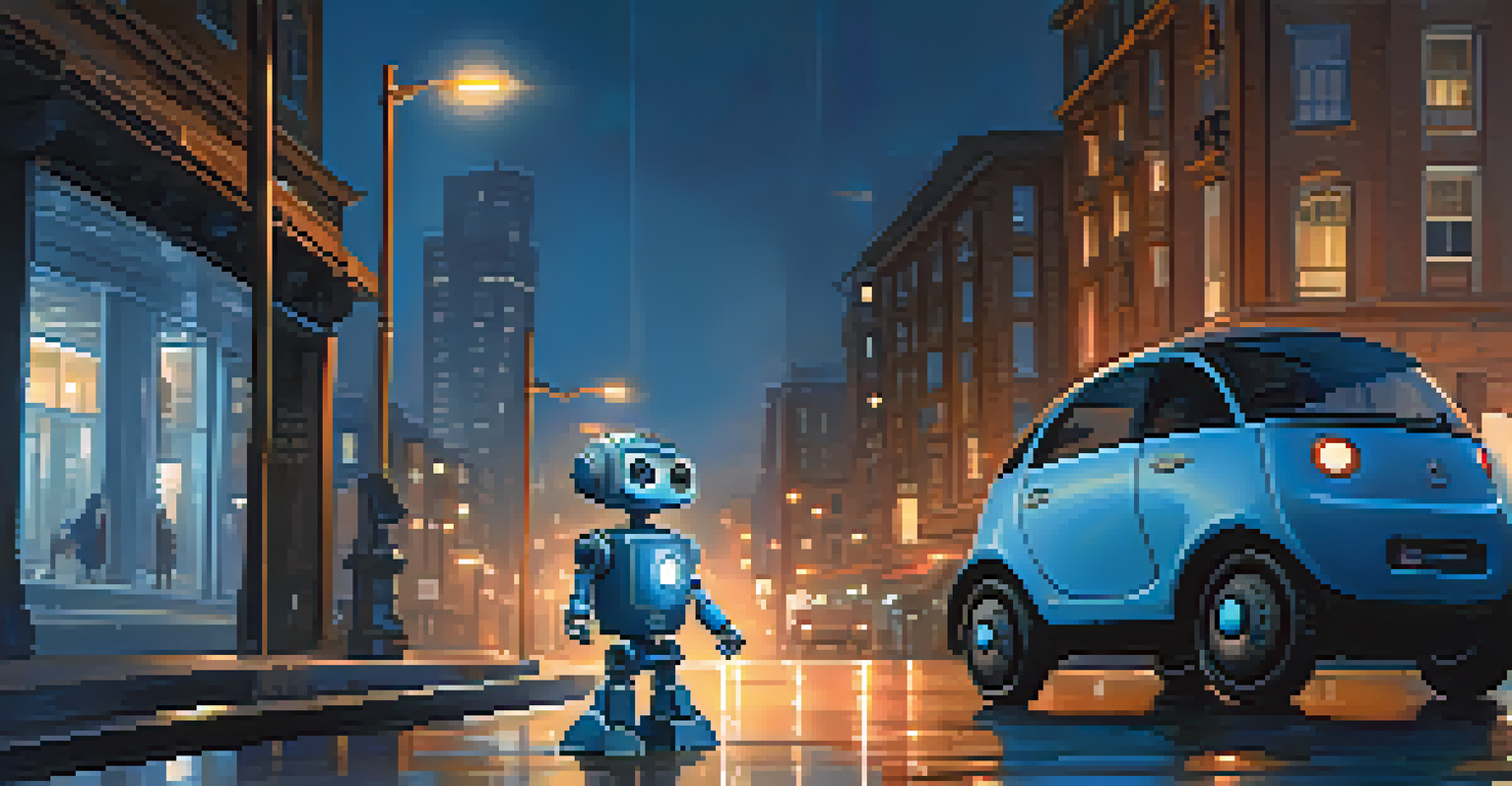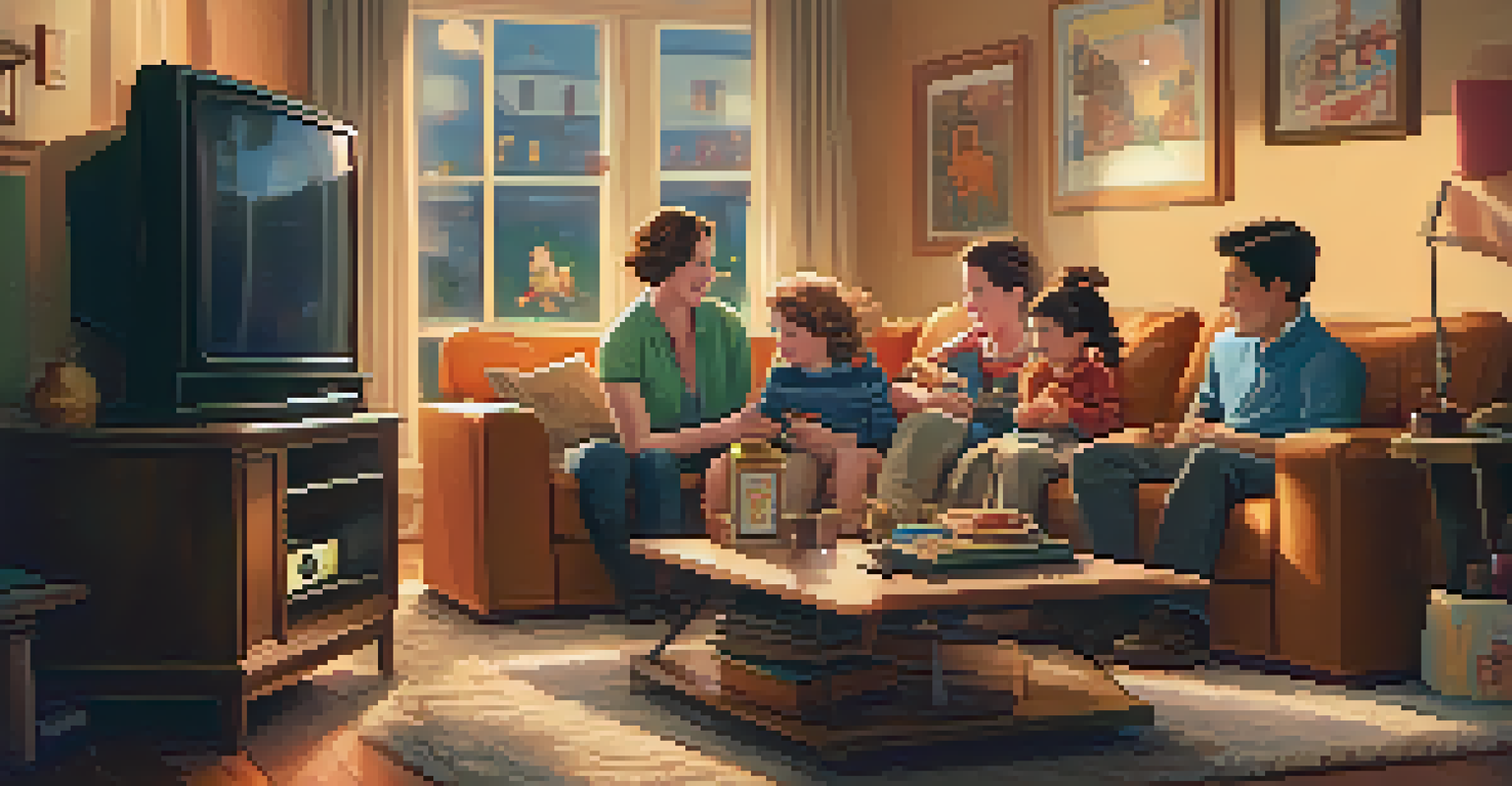Animation and Emotion: How Cartoons Connect with Audiences

The Power of Animation in Storytelling
Animation is a unique storytelling medium that captivates audiences of all ages. Through vibrant visuals and imaginative characters, it creates a world where anything is possible. This freedom allows animators to convey complex emotions and narratives in ways that often feel more relatable than live-action films.
Animation can explain whatever the mind of man can conceive.
For instance, think about a beloved animated film like 'Inside Out.' The personification of emotions as characters not only entertains but also educates viewers about the complexity of feelings. This creative approach allows audiences to connect with their own experiences in an engaging manner.
Animation breaks down barriers—whether cultural or generational—making stories accessible and impactful. By tapping into universal themes, animated stories resonate deeply, proving that the medium is not just for children, but for everyone.
Emotional Resonance in Character Design
Character design plays a crucial role in how we emotionally connect with animated stories. Artists use exaggerated features, colors, and expressions to evoke specific feelings. A character with large, expressive eyes can instantly communicate vulnerability, drawing viewers into their emotional journey.

Take, for example, the character of Wall-E in Pixar's film of the same name. Without uttering many words, Wall-E's design—his big eyes and small stature—invites empathy, allowing viewers to feel his loneliness and longing for connection. This emotional depth is achieved through thoughtful character design that resonates with audiences.
Animation: A Universal Storytelling Tool
Animation captivates audiences of all ages by breaking down cultural barriers and conveying complex emotions through engaging visuals.
Moreover, the diversity in character designs allows for a wider range of emotional experiences. When viewers see themselves reflected in animated characters, it enhances their connection to the narrative, making the emotional impact even stronger.
Music and Sound: The Emotional Soundtrack
Music and sound effects are integral to creating an emotional atmosphere in animation. A well-composed score can elevate a scene, enhancing feelings of joy, sadness, or suspense. Think about the iconic scores from Disney films—these melodies stick with us and heighten our emotional responses.
The best thing about a picture is that it never changes, even when the people in it do.
In 'The Lion King,' for example, the haunting melody during Mufasa's death scene amplifies the sorrow felt by viewers. The combination of visuals and music can create a powerful emotional experience, making us feel as if we are part of the story.
Sound effects also play a vital role in animation, from the whimsical sounds of cartoonish antics to the dramatic crescendos during intense moments. Together, these audio elements help mold the emotional landscape of animated narratives.
Humor as a Bridge to Emotion
Humor often serves as a bridge to deeper emotional connections in animated films. By making us laugh, cartoons can create a sense of comfort and safety, allowing viewers to explore more serious themes. This technique is particularly effective in family-oriented animations, where a balance between humor and emotion is crucial.
Consider 'Toy Story,' where humor is woven throughout the narrative, yet the underlying themes of friendship and loss resonate deeply. The comedic moments provide relief, making the emotional punches hit harder when they come.
Character Design Evokes Emotion
Thoughtful character design, with exaggerated features and expressions, enhances emotional connections, allowing viewers to empathize with the characters' journeys.
Ultimately, humor can be a tool to address complex emotions, making them more digestible. It allows audiences to engage with serious topics without feeling overwhelmed, fostering a deeper connection with the story.
Cultural Context: Animation's Emotional Language
Animation reflects cultural nuances and values, influencing how emotions are expressed and understood. Different cultures may utilize varied animation styles and storytelling techniques to convey feelings. This diversity enriches the medium, allowing for a broader emotional range.
For instance, Studio Ghibli films often explore themes of nature and spirituality, presenting emotions in ways that resonate deeply with Japanese culture. In contrast, Western animations might focus more on individualism and personal growth, showcasing a different emotional landscape.
By understanding cultural contexts, audiences can appreciate the emotional depth of animated stories more fully. This cultural lens allows for a richer viewing experience, as viewers find common ground in shared emotions, even amidst cultural differences.
The Nostalgia Factor in Animation
Nostalgia plays a significant role in how audiences connect with animated content. Many people have fond memories of childhood animations, creating a sense of warmth and familiarity. This emotional attachment often drives viewers to revisit these stories, reinforcing their connection.
Consider how remakes or reboots of beloved animated classics often evoke nostalgia. When audiences hear familiar songs or see iconic characters reimagined, it can trigger a flood of emotions tied to their childhood experiences.
Nostalgia Enhances Viewer Engagement
The nostalgic elements in animation create emotional attachments that draw audiences back to beloved stories, reinforcing their connection across generations.
This nostalgia not only enhances viewer engagement but also influences the success of animated films. By tapping into past memories, animators can create a powerful emotional pull that draws in audiences of all ages.
Animation's Impact on Mental Health and Wellbeing
Animation can have a profound impact on mental health and overall wellbeing. Many animated shows explore themes of self-acceptance, friendship, and resilience, providing valuable life lessons through relatable characters. This can be particularly beneficial for younger audiences navigating their own emotional experiences.
For example, shows like 'Steven Universe' tackle complex issues such as identity and emotional struggles in a way that resonates with viewers. By presenting these themes through animation, they become more approachable, encouraging open discussions about mental health.

Moreover, the escapism offered by animated stories can provide a temporary refuge from life's challenges. The vibrant worlds and imaginative narratives allow viewers to disconnect from stress and engage with emotions in a safe space.